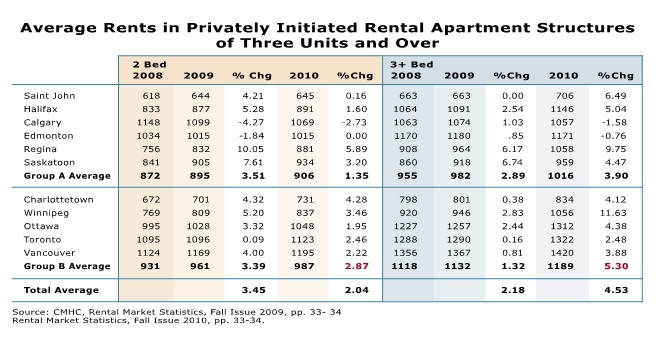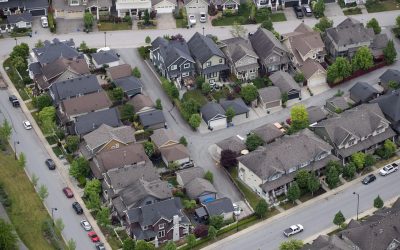- Rent control refers to government regulations that aim to protect tenants from unforeseen increases in rents.
- Some analysts have expressed skepticism that rent controlled jurisdictions will have consistently slower growth in rental prices compared to jurisdictions where rent is not regulated.
- The graphic below shows average rents between 2008 and 2010, for two and three bedroom apartments for a bundle of cities in jurisdictions where rent is unregulated (Group A) and another bundle from jurisdictions where rent is controlled (Group B) .
- The data shows that for rent controlled cities, between the years 2008 and 2010, on average, rents increased slightly faster than in unregulated cities. The average rent for cities in the unregulated group for two bedroom apartments increased from $872 to $906 (3.9 percent) between 2008 and 2010. By comparison, the five-city average for rents in rent-controlled jurisdictions increased from $931 to $987 (6 percent) during the same period.
- For three bedroom apartments, the average rent for the two groups of cities increased at approximately the same rate (6 percent each) over this two year period.
- Many factors influence the rate at which rent prices increase over time. These data show that jurisdictions with rent control policies will not always experience slower growth in rent prices than jurisdictions where rent is unregulated.

View as PDF (1 Page)


